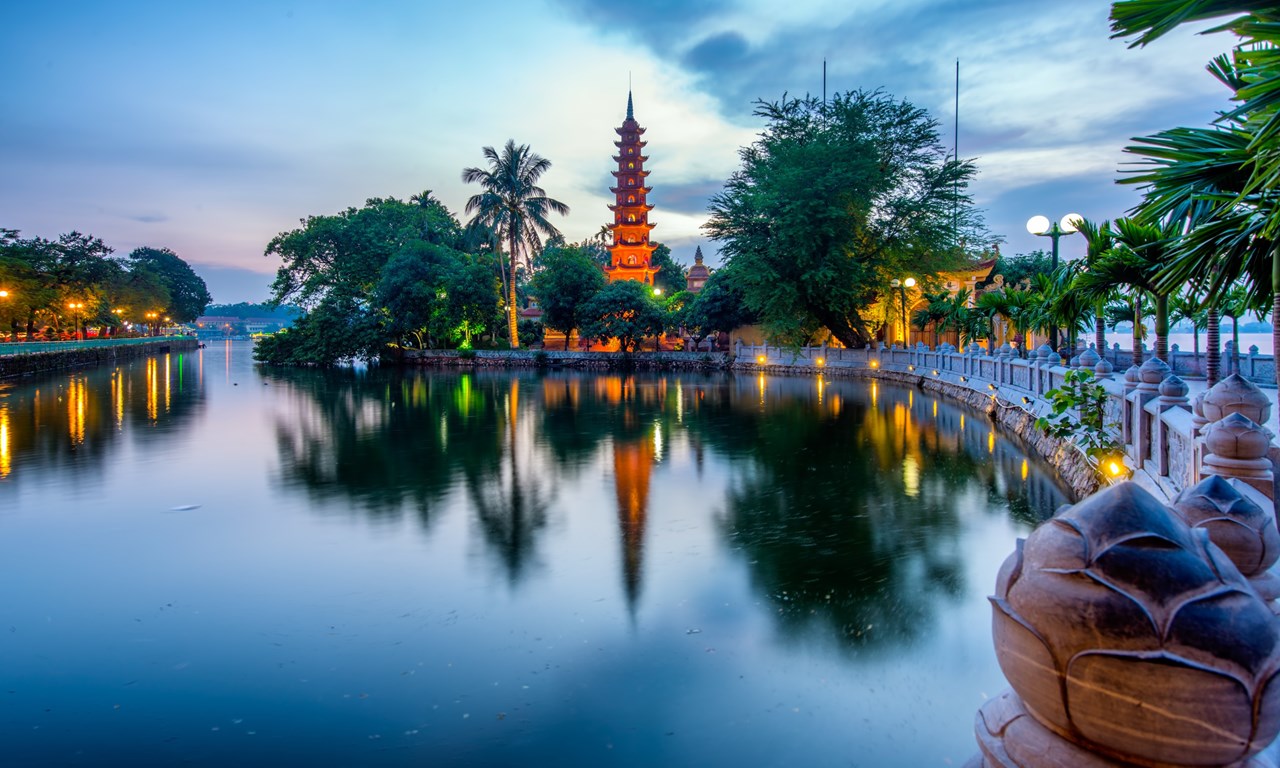
When was Tran Quoc Pagoda built?
Tran Quoc Pagoda was originally named Khai Quoc Pagoda, built in Yen Hoa village, near Red River. At the time of King Ngo Quyen, the fourth generation of the line of Vo Ngon Thong – Zen monk Van Phong was the abbot at the temple.
Heir of Zen Master Van Phong is Zen master Khuong Viet. He was known for his intellectual knowledge, invited by King Dinh Tien Hoang and Le Dai Hanh to be the supreme adviser of the king.
In the Ly Dynasty, Khai Quoc Pagoda became the Buddhist Center of Thang Long Citadel. This place was in charge of the teaching of many Zen masters of the Vo Ngon Thong meditation sect.
In the reign of King Le Thai Tong, the pagoda was called An Quoc Pagoda. In the reign of King Le Kinh Tong, because the river bank was heavily eroded, people moved the temple to a small island on West Lake, also known as Kim Ngu island. The location of Kim Ngu island is the place where previously used to erect Thuy Hoa Palace belonged to the Ly Dynasty and Han Nguyen Palace in the Tran dynasty.
In the reign of King Le Hy Tong, An Quoc Pagoda was renamed Tran Quoc Pagoda. At the beginning of the Nguyen Dynasty, the pagoda continued to be renovated, decorated with statues and bells. In 1821, Emperor Minh Mang visited the pagoda, offered 20 lakhs of silver to repairing the temple. In 1842, King Thieu Tri visited the pagoda, changed the name of the temple to Tran Bac Pagoda and gave a gold coin with 200 coins.
Tran Quoc Pagoda – attractive attractions
In addition to its long history, one of the things that makes Tran Quoc Pagoda special is its position, landscape and architecture. All three factors have contributed to Tran Quoc Pagoda becoming the top tourist destination in vietnam food tours.
Perhaps there are few temples located on a very special position like Tran Quoc Pagoda. The pagoda is located on the only island of the West Lake full of dreams.
It is also because it is on an isolated island, although Tran Quoc Pagoda is “in the middle” of a crowded and bustling street in Hanoi, it still retains a fresh and quiet atmosphere.
Although over time, the landscape of Ho Tay has changed but still creates a unique spiritual and historical landscape for this place.
Notes for visitors when visiting Tran Quoc Pagoda
As a sanctuary, when visiting Tran Quoc Pagoda, tourists on hanoi street food walking tour should pay attention to some of the following issues:
Guests should wear polite, discreet costumes. Avoid wearing clothes that are too short, inappropriate and offensive, such as two-wire shirt, short skirts, shorts, and tank tops.
When visiting the temple, visitors also note for keeping quiet, not making noise, not talking loudly, laughing.
Tran Quoc Pagoda is located in the center of Hanoi capital, near the end of Thanh Nien Road – Ba Dinh district, so moving here is quite easy. Visitors can go by bus, taxi … If you are afraid of travelling alone, visiting self-sufficient, tourists should choose to participate in Hanoi food tours.
Once a Buddhist center of Thang Long citadel, Ly – Tran period, Tran Quoc Pagoda has many valuable values in architecture, history and culture. Not only is a place of holy Buddha, but Tran Quoc Pagoda is also an attractive destination for anyone wishing to learn more about old values.
